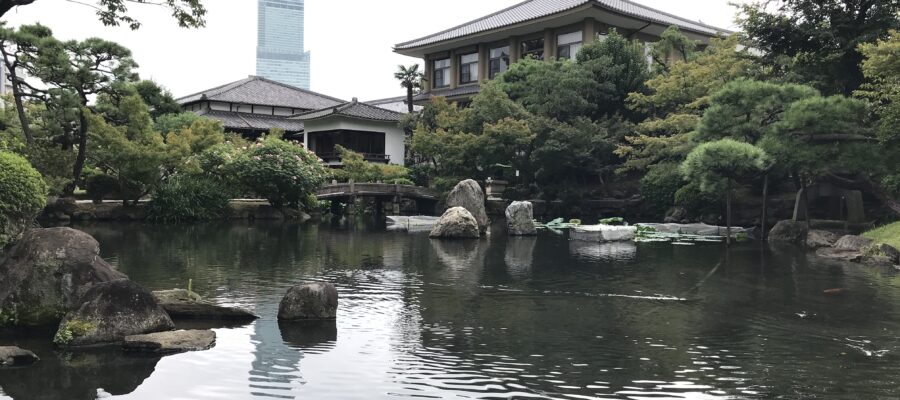四天王寺の奥にある極楽浄土の庭
聖徳太子が建てた四天王寺。前回は、新西国霊場三十三所の第1番として紹介しましたが、今回は、その中にある庭園を紹介したいと思います。名称は極楽浄土の庭という、なんともありがたい名前がついています。境内の東北の隅になりますので、ついつい見落としてしまうかも知れませんが、お寺にお立ち寄りの際は、ぜひ一度、訪れてみてください。

極楽浄土への道
この庭は池泉回遊式庭園ですが、歩くにしたがって、ある物語が展開していきます。「二河白道(にがびゃくどう)」というたとえ話なのですが、むさぼることを意味する「水の河」と、怒り恨むことを意味する「火の河」に挟まれた「白道」を極楽浄土への道(仏法)と例えています。
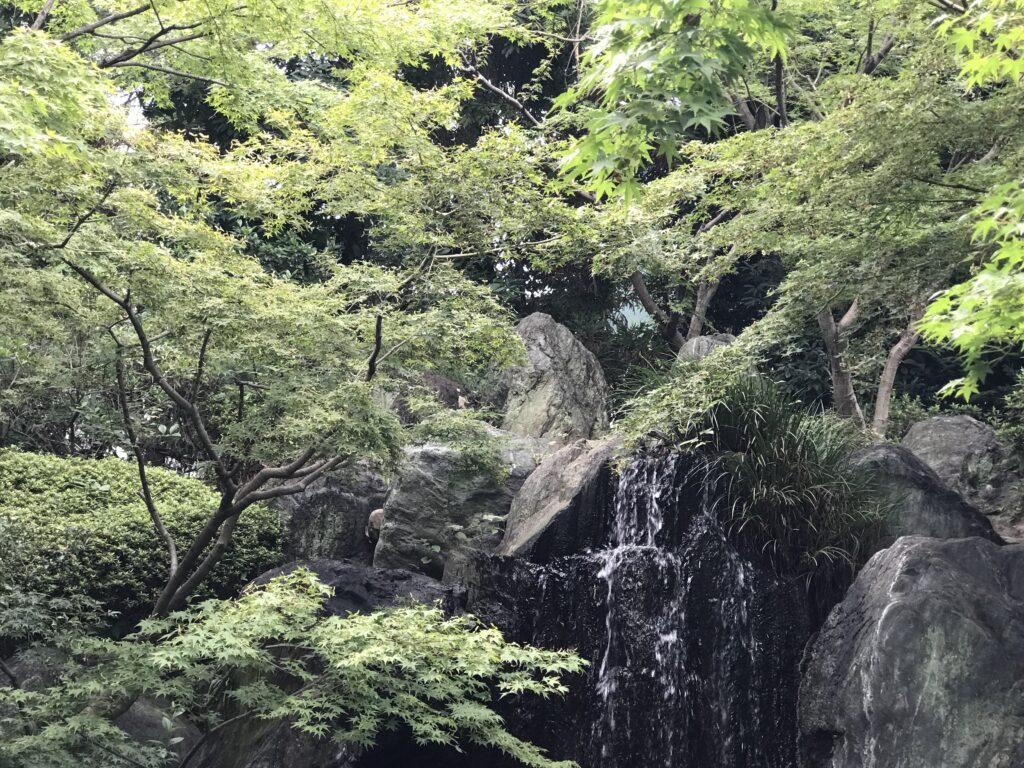
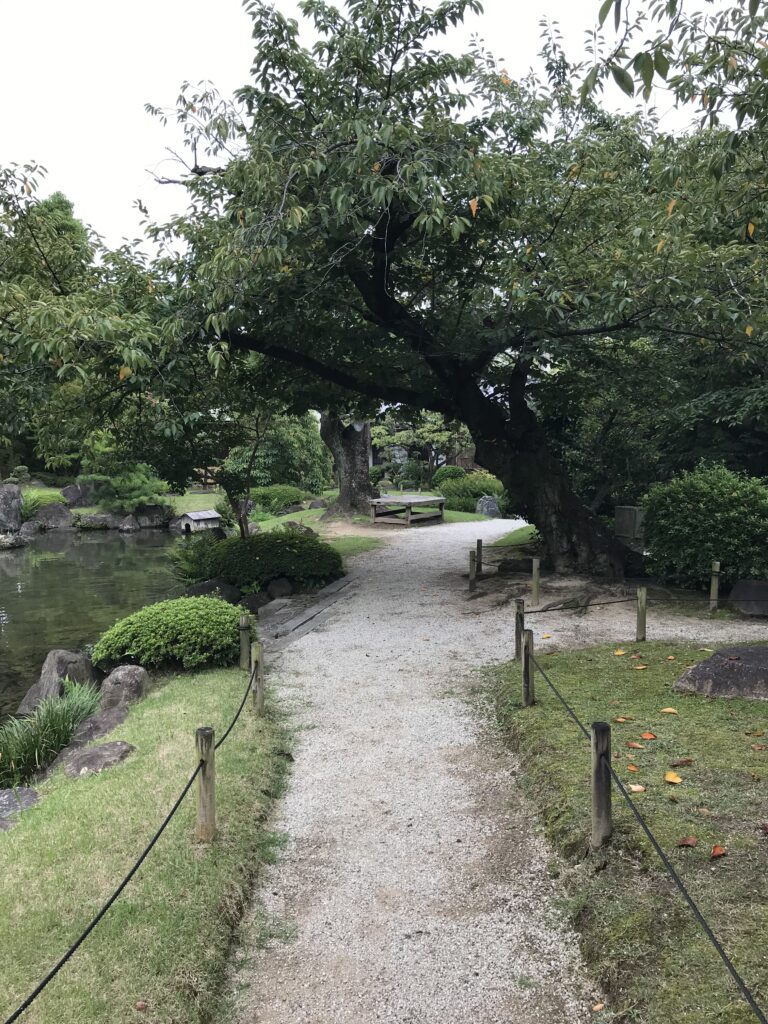
釈迦三尊石のところから流れ出てくる釈迦の滝の水が、地獄を表す2つの河の流れとなり、その間に細い白道が極楽浄土を表す極楽の池にまで続いていて、道なりに進むだけで極楽にたどりつくことができます。
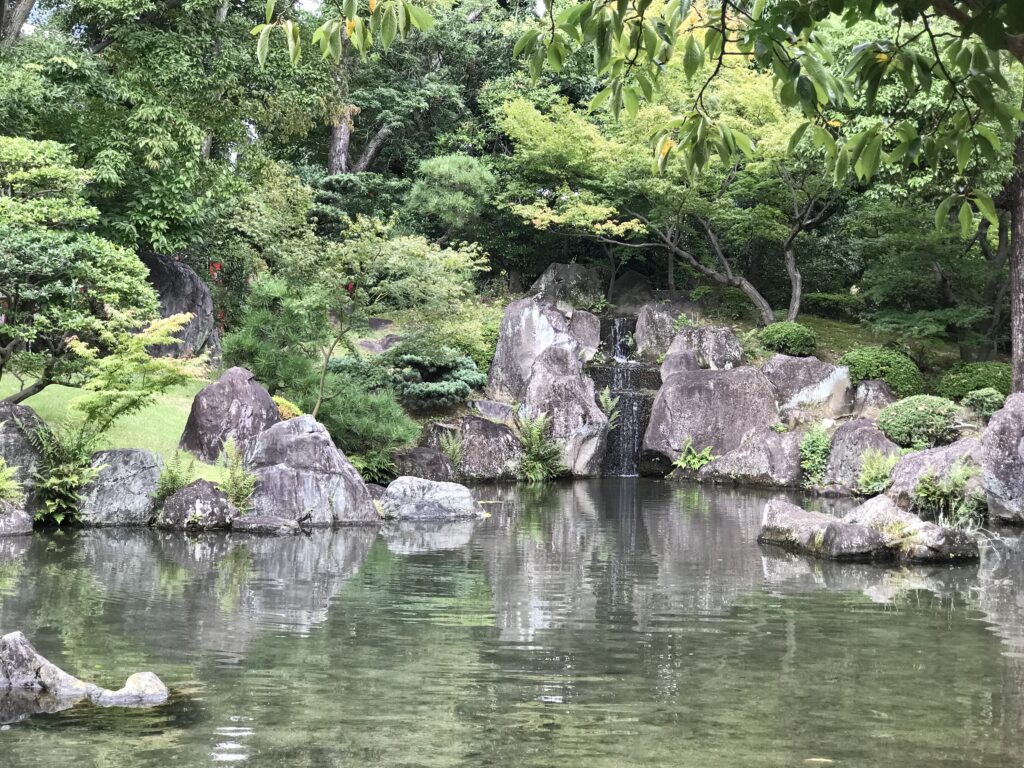
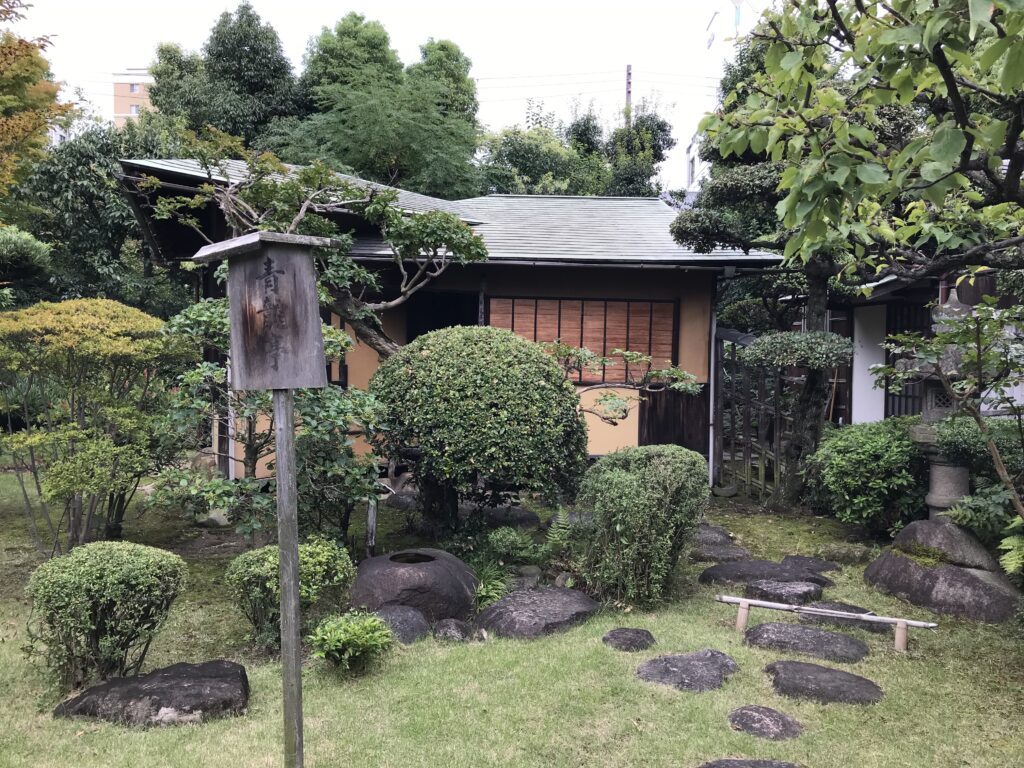
あべのハルカスが借景
途中、瑠璃光の池や茶亭を左手に見ながら歩くと、極楽の池越しに薄青く塗られた洋風建築と思しき八角亭が出てきます。この極楽の池には阿弥陀三尊石が並んでいて、まさに極楽浄土まで来たことを表現しています。池のまわりの石畳もデザインがいいです。この池からは借景にあべのハルカスも見ることができます。
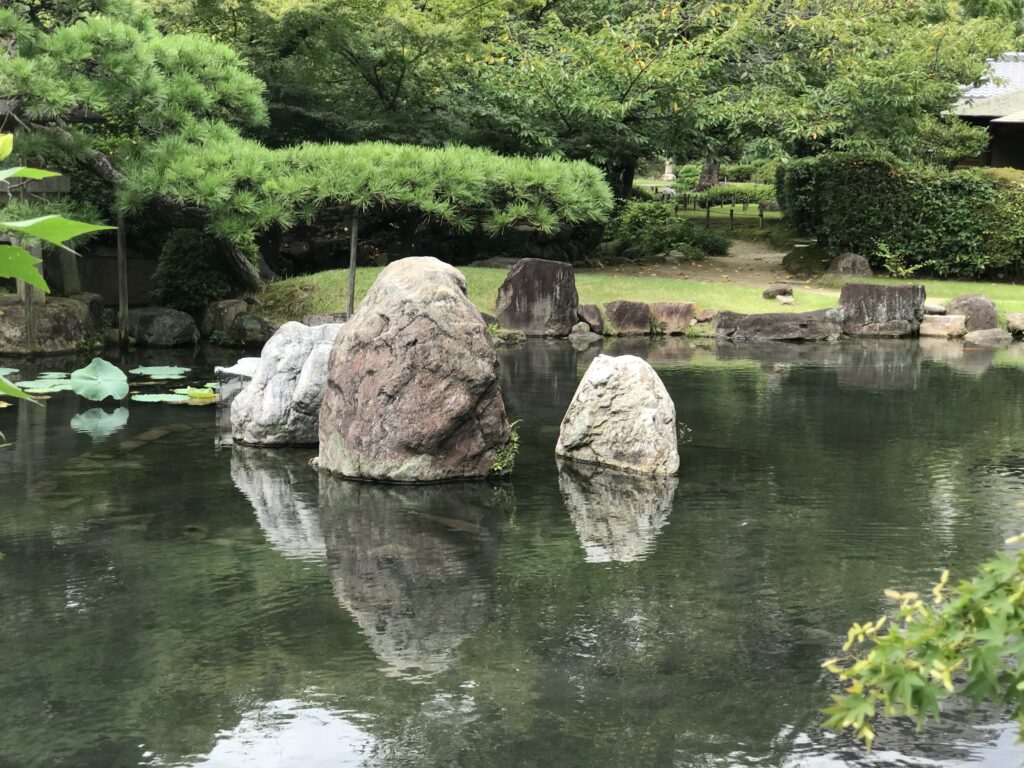
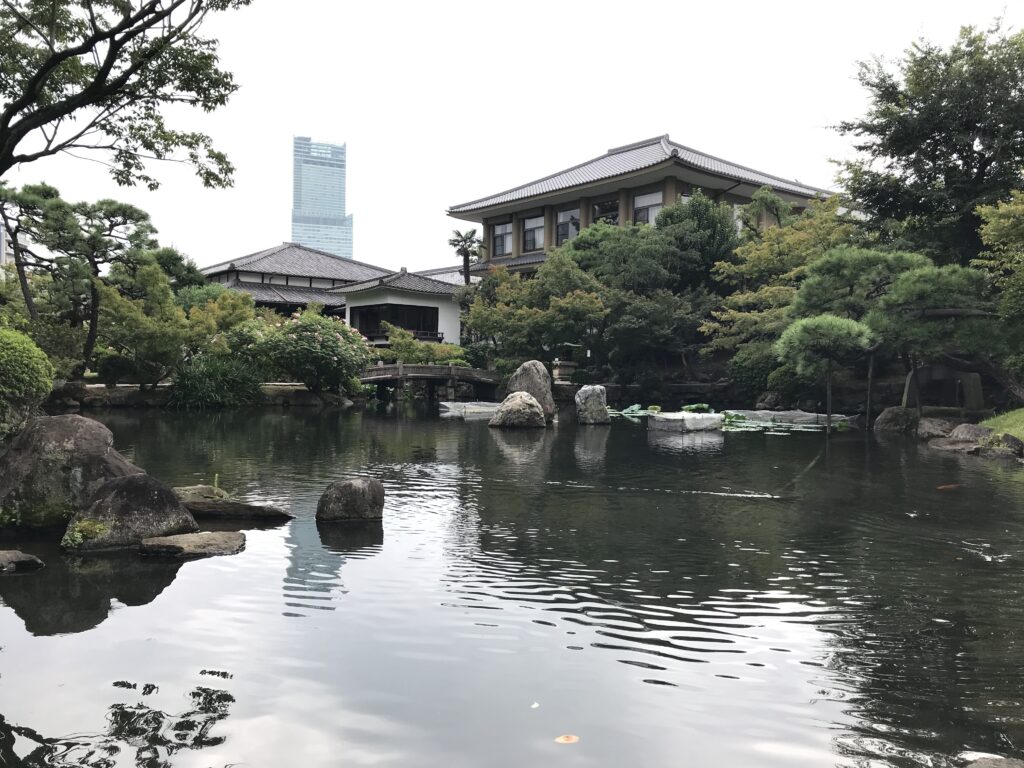
極楽の池からさらに歩くと、もう一つの庭「補陀落の庭」が現れます。こちらは観音浄土を表しているそうです。ストーリーをたどりながら回遊式庭園を歩いたことは、あまりなかったのですが、今回は作庭者の意図を思い浮かべながら歩くことで、より楽しむことができました。「都会のオアシス」とは、言い古した言葉ですが、大阪にもいい庭園があるなと、嬉しくなりました。(完)
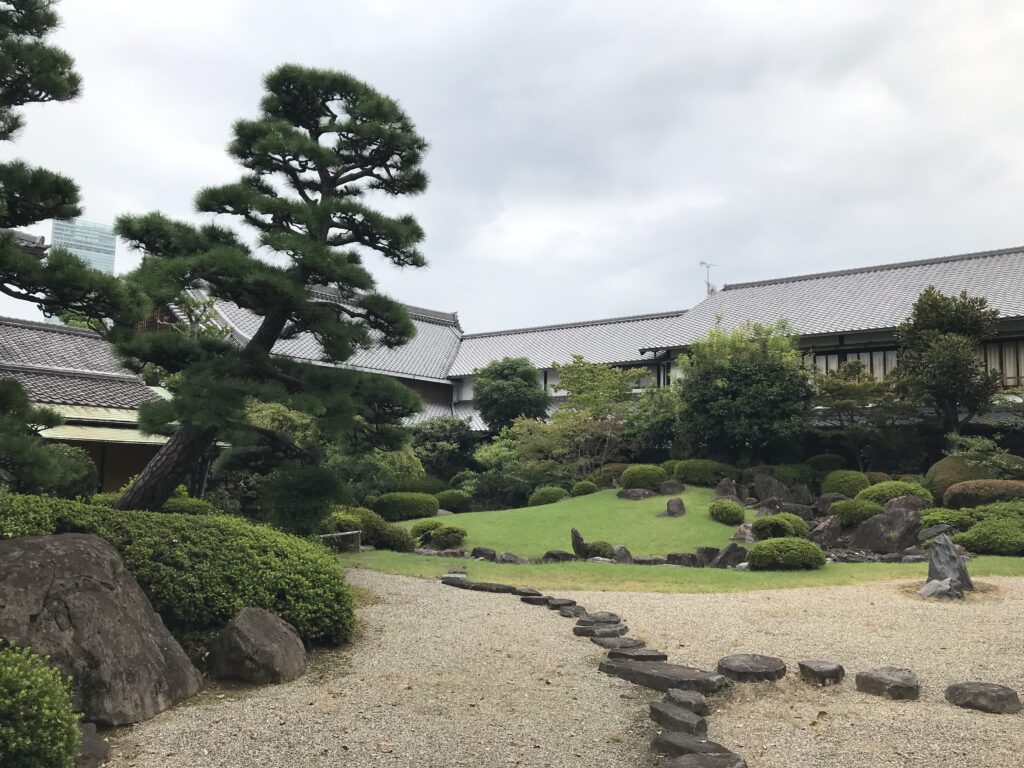
大阪のおみやげ
さあ、串カツ食べて元気を出しましょう!
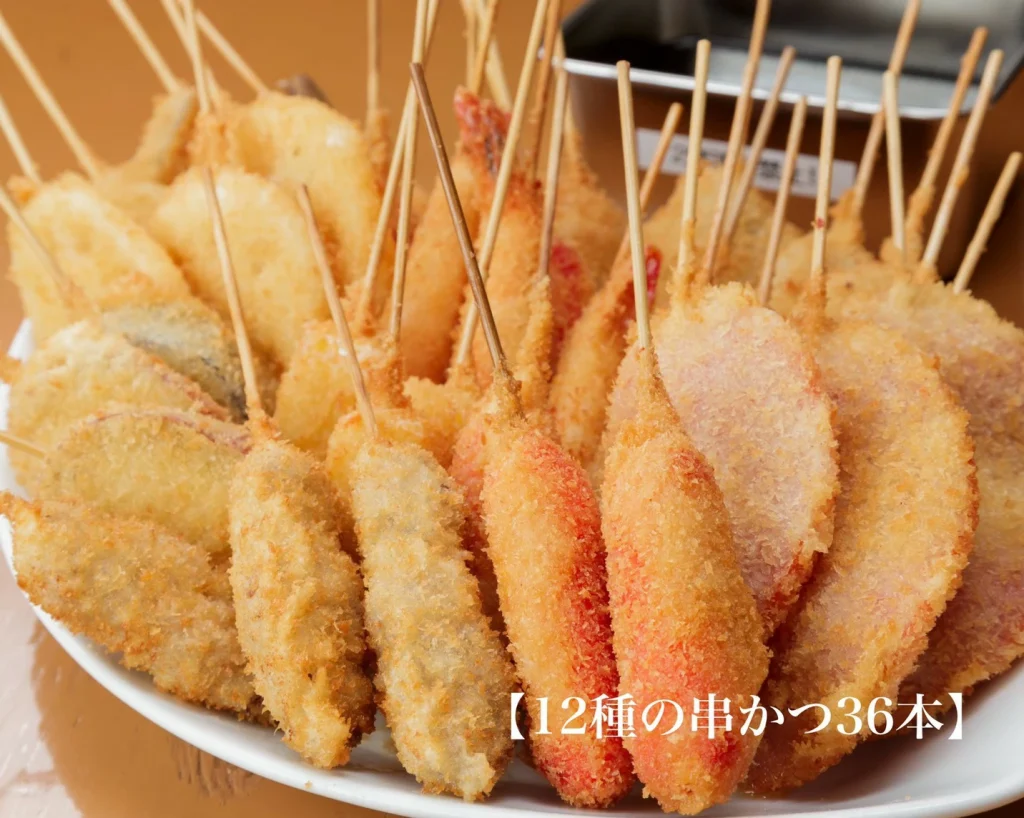
価格:5,980円
(2022/1/2 18:24時点)
感想(2件)
Shitennoji Temple (2) Garden
The Garden of Paradise at the back of Shitennoji Temple
Shitennoji Temple was built by Prince Shotoku. Last time, I introduced it as the first of the 33 sacred places in the new Western Japan, and this time I would like to introduce the garden in it. The name of the garden is Gokuraku Jodo no Niwa, which means “Garden of Paradise” in Japanese. It is located in the northeast corner of the temple grounds, so you may miss it, but if you stop by the temple, please visit it.
The Way to Paradise
This garden is a pond garden, and as you walk through it, a story unfolds. It is a parable called “The White Way of Two Rivers,” which compares the “white way” between the “river of water,” which means devouring, and the “river of fire,” which means anger and resentment, to the path to paradise (Buddhism).
The water from the Shakyamuni Waterfall flowing out from the Shakyamuni Sanzon Stone becomes the flow of two rivers representing hell, and a narrow white path between them leads to the Pond of Paradise representing the Pure Land, and you can reach paradise just by following the path.
Abeno Harukas is in the background.
On the way, you will see the Ruriko Pond and a tea house on your left, and then you will see an octagonal pavilion painted in pale blue, which looks like a Western-style building, over the Pond of Paradise. The pond of paradise is lined with Amitabha Sanzon stones, representing that you have reached the Pure Land of Paradise. The stone pavement around the pond is also well designed. From this pond, you can also see Abeno Harukas as a borrowed view.
Walking further from the Pond of Paradise, you will come to another garden, the Garden of Bodhidharma. This garden is said to represent the Pure Land of Kannon. It was not often that I walked through a circular garden while following a story, but this time I was able to enjoy it more by thinking about the intentions of the gardeners. “An oasis in the city” is an overused phrase, but I was happy to see that there are some nice gardens in Osaka. (End)
Temple Shitennoji (2) Jardin
Le Jardin du Paradis à l’arrière du temple Shitennoji.
Le temple Shitennoji a été construit par le prince Shotoku. La dernière fois, je l’ai présenté comme le premier des 33 lieux sacrés du nouveau Japon occidental, et cette fois, je voudrais vous présenter le jardin qui s’y trouve. Le nom du jardin est Gokuraku Jodo no Niwa, ce qui signifie “Jardin du Paradis” en japonais. Il est situé dans l’angle nord-est de l’enceinte du temple, vous risquez donc de le manquer, mais si vous vous arrêtez au temple, n’hésitez pas à le visiter.
Le chemin du paradis
Ce jardin est un jardin d’étang, et lorsque vous vous y promenez, une histoire se déroule. Il s’agit d’une parabole intitulée “La voie blanche des deux rivières”, qui compare la “voie blanche” entre la “rivière d’eau”, qui signifie dévorer, et la “rivière de feu”, qui signifie colère et ressentiment, au chemin du paradis (bouddhisme).
L’eau de la cascade Shakyamuni s’écoulant de la pierre de Sanzon Shakyamuni devient le flux de deux rivières représentant l’enfer, et un étroit chemin blanc entre elles mène à l’étang du paradis représentant le pays pur, et vous pouvez atteindre le paradis juste en suivant le chemin.
Abeno Harukas est en arrière-plan.
En chemin, vous verrez l’étang de Ruriko et une maison de thé sur votre gauche, puis vous verrez un pavillon octogonal peint en bleu pâle, qui ressemble à un bâtiment de style occidental, au-dessus de l’étang du paradis. L’étang du paradis est bordé de pierres Amitabha Sanzon, représentant que vous avez atteint le Pays Pur du Paradis. Le pavé de pierres autour de l’étang est également bien conçu. Depuis cet étang, vous pouvez également voir Abeno Harukas comme une vue d’emprunt.
En vous éloignant de l’étang du paradis, vous arriverez à un autre jardin, le jardin de Bodhidharma. Ce jardin est censé représenter le Pays Pur de Kannon. Ce n’est pas souvent que je me promène dans un jardin circulaire en suivant une histoire, mais cette fois, j’ai pu en profiter davantage en réfléchissant aux intentions des jardiniers. “Une oasis dans la ville” est une expression galvaudée, mais j’ai été heureux de voir qu’il y a de beaux jardins à Osaka. (Fin)
